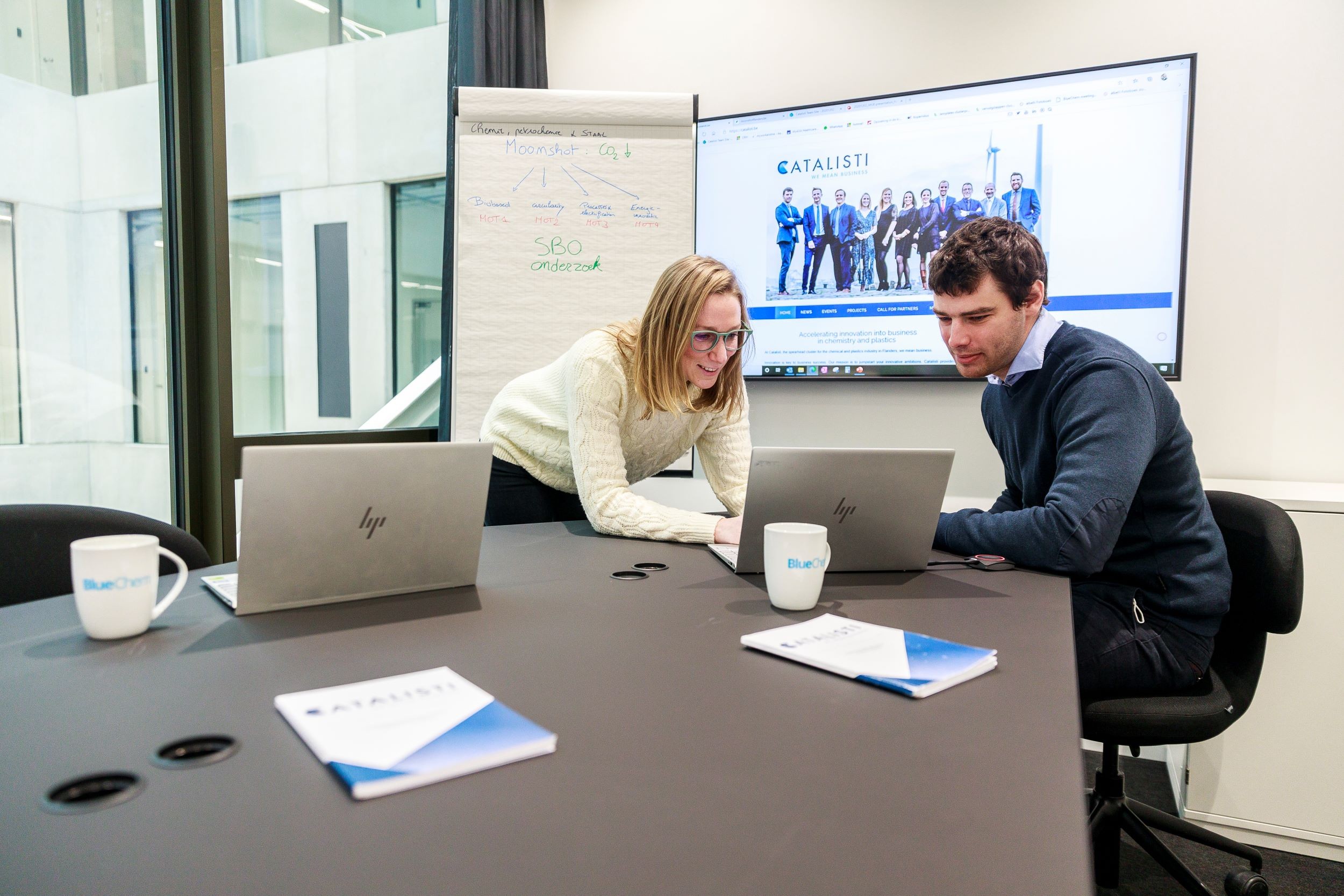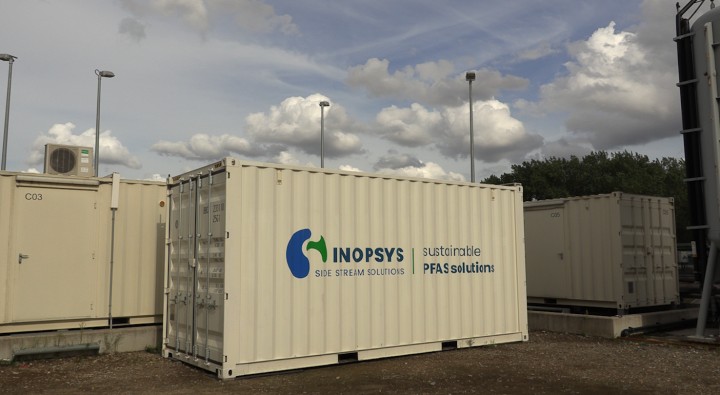
Inopsys develops innovative solution to purify water from PFAS
Inopsys develops innovative solution to purify water from PFAS
September 2022

Antwerp scale-up presents promising results in fight against ‘Forever Chemicals’
Inopsys, a scale-up with an R&D team at Antwerp incubator BlueChem, is developing an effective and sustainable technology to remove PFAS from water. With support from the city of Antwerp, Inopsys is developing a solution that succeeds in purifying contaminated water better than the most widely applied technology on the market to date.
Inopsys develops promising technology to purify water from PFAS
After months of lab research with support from the city of Antwerp, Inopsys succeeded in applying a successful technology for the purification of water from PFAS. The results of the first tests at the BlueChem lab are promising and the pilot installation at Lantis’ Oosterweel yard is scaling up the solution.
Current benchmark technology for PFAS removal
has received increasing attention from policymakers and the general public in recent months. The technology most widely applied today for the removal of PFAS from water – Granular Activated Carbon (GAC) – is reaching its limits. As the scale of the PFAS problem becomes increasingly clear, legal standards are emerging for the maximum amount of PFAS allowed in water discharges that are 100 to 1,000 times more stringent than current standards. For the first time, they will also apply to the most difficult-to-remove PFAS substances. Technological innovations are needed to efficiently meet those standards, and where necessary to contribute to the protection of public health and the environment. Inopsys is fully committed to this.
Innovative power of new treatment technology
The innovative power compared to the benchmark Granular Activated Coal (GAC) is obvious:
- Inopsys’ solution uses adsorbents that can absorb more PFAS, including the most difficult to remove PFAS substances.
- The technology results in a more compact treatment installation.
- The adsorbent material is reusable/regenerable, so it does not have to be incinerated after a single use each time. This creates less waste.
- The technology allows higher rates of PFAS removal, and thus lower outgoing concentrations. This is positive given the upcoming stricter standards.
- The combination of the foregoing advantages mean that the cost of this innovation is, in most cases, lower than the most commonly used technology to date.
Looking to the future
Inopsys offers full-service PFAS solutions and meanwhile is investing in the future: on the one hand in high-tech analytical and on the other hand in projects to develop innovative technologies to PFAS. “We are proud of this innovation and have the ambition to scale it up further. Inopsys wants to bring to market nationally and internationally a solution that makes an impactful contribution to addressing the urgent PFAS problem” said Steven de Laet, CEO of Inopsys.
Support from the city of Antwerp
Inopsys was able to develop this solution with financial support from the City of Antwerp, encouraging innovative start-ups and scale-ups. Thanks to their support, companies can realize essential innovations that would not have been possible otherwise.
The Inopsys laboratories are located in BlueChem, an incubator for sustainable chemistry of which the city of Antwerp is a partner, alongside essenscia, VITO and POM Antwerpen. The success of Inopsys is proof that this incubator is performing well.
Antwerp’s Vice-Mayer : “The fact that this pioneering and globally relevant technology is being developed in Antwerp is magnificent, but obviously no coincidence. For several years, the city has been investing heavily in facilitating sustainable economic innovations. We do this with the realisation of BlueChem but also by supporting innovative developments. And that pays off. In this way, we not only create economic growth and thus prosperity in the city, but also harness the enormous potential of our start-ups in the transition to a sustainable economy as well as addressing environmental and climate challenges.”